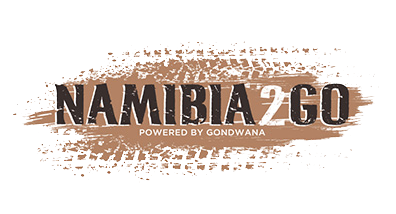The desert sands of Garub, between Lüderitz and Aus in south-western Namibia, may seem unremarkable except for the old abandoned railway station and the wild horses that slake their thirst at the waterhole. But a century ago Garub was an important water source in the desert and with its railway siding, borehole and flat-topped plateau, it was for a brief period a bustling South African military base with 10 000 soldiers and 6 000 horses.
.jpg?width=600&height=600&name=497357408_1085480816935959_1060729920070438061_n%20(1).jpg)
It’s mindboggling to imagine the scenario of this quiet section of the Namib-Naukluft Park where the east wind sometimes blows ferociously coating everything in sand. At the onset of World War One in 1914, at the behest of the British government to seize German South West Africa, the Union of South Africa forces landed in Lüderitzbucht (Lüderitz Bay) in support of the Allied forces. When the German troops got wind of their imminent arrival they retreated eastwards through the desert, blowing up the railway line behind them. When they reached Garub, 101km away, they destroyed the railway line, water tanks and borehole and torched the station house before continuing to Aus, 25km to the east, where they dug themselves in, built fine fortifications and prepared to make a stand.
The Union soldiers followed them eastwards as they retreated, repairing the railway as they progressed. It was difficult work with wind, sand and the absence of water. When they eventually reached Garub they paused for three months, repairing and redrilling the borehole and building a railway line from the railway house to the borehole, 4½km away. But there was another reason why they were halted – the rebellion in the Union when many South Africans, mostly Afrikaners, protested against the attack on the Germans who had supported them financially during the Anglo-Boer War.
.jpg?width=600&height=600&name=497444980_1085480780269296_951379664423626440_n%20(1).jpg)
While the repairs were underway, men and animals at Garub were dependent on the train from Lüderitz which brought water - shipped from the Cape and from the desalination plant at the coast, supplies and fodder for the horses. It must have been quite a sight to see the heavily-laden train arrive at Garub where army tents dotted the sand in their hundreds and horses sent clouds of dust into the air. General Botha even paid a visit to the base to boost the morale of the troops.
When the rebellion was quelled three months later, the Union soldiers continued to Aus. The anticipated confrontation between the forces never took place as the Germans, finding themselves outnumbered by Union soldiers approaching from several directions, moved north and evacuated their stronghold at Aus. Besides the odd skirmish and a bombing from the small German plane, which scattered the horses and created mayhem at the base, Garub didn’t see any action. The peace accord would eventually be signed at Khorab on 9 July 1915, ending the southern-African involvement in the war.
Garub remained an important watering point in the desert on the Lüderitz to Keetmanshoop line until steam locomotives were replaced by diesel. The borehole was maintained by Consolidated Diamond Mines and the South African Railways. Another borehole was drilled by farmers for emergency grazing in the early 1960s. The area was part of the restricted diamond area until 1986 when this section of the Sperrgebiet was incorporated into the Namib-Naukluft Park. The original Garub borehole provided water for the wild horses until the end of 1991 when water troughs were built at the present-day Garub viewpoint, utilising the second borehole.
.jpg?width=600&height=600&name=497093686_1085480756935965_7536479676524529465_n%20(1).jpg)
What I didn’t know until recently when I was presented with an aerial photo of Garub, is that the remains of the Garub base on the plateau are still visible from above. The circles of rock from where tents were once weighted down are still clearly defined more than a hundred years later. They are bordered by a perimeter of rock ramparts and have pathways radiating outwards towards the blockhouses that were armed with machine guns. The stonework is still surprisingly clear and anyone who saw it from above might wonder who had built such a fortress in the desert so many years ago.
From below, all that now remains is the old crumbling Garub railway station, which has become a picturesque landmark in the Namib Desert on the stretch between Aus and Lüderitz where travellers often stop for a photograph. A few stark tree trunks add to the evocative scene.


.png)
.jpg)
.jpg)




.png)

SUBMIT YOUR COMMENT